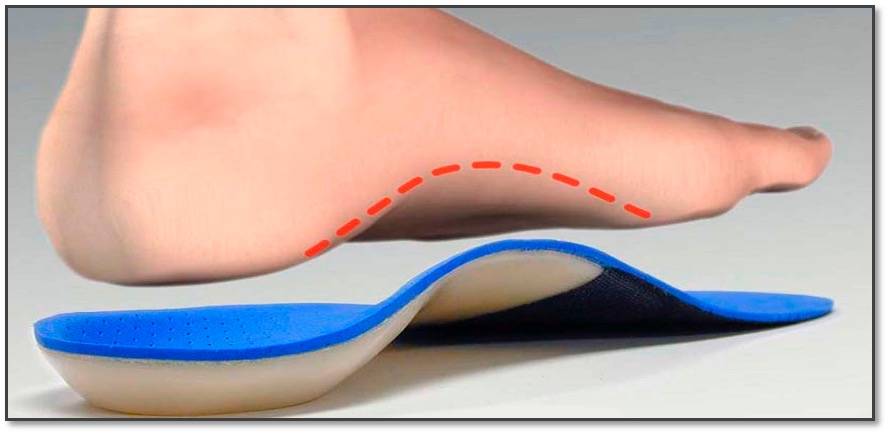Orthotics for Cycling, How They Can Help
Cycling is an excellent hobby, and for the cycling enthusiast, the freedom to ride on a beautiful day is a great way to spend leisure time. For those who use their bike as their primary source of transportation, it is the way to get to and from work or activities. Yet, cycling takes a toll on the body. It is crucial to be aware of the physical stress placed on the body when riding. The repetitive motion over many miles combined with poor biomechanics can sometimes lead to injury.
Unlike walking and running, which typically involve the heel striking the ground, during biking the forefoot is the only area in contact with the pedal. In order to maximize power and efficiency from the glutes, quads and hamstrings, it is important that the foot has very little movement during riding.
When we walk, our arches are the ‘leaf-spring’ of our feet and absorb the impact that is created with every step we take. Our arches adapt to the ground we walk on and move slightly to keep us upright as we take steps. Our steps are physical signals to the rest of the body – hips, knees, and ankles muscles – to keep our legs stable. When we don’t have the proper balance, it causes the medial arch to fail or collapse.
Our feet have three distinct arches that need protection. The arches are the medial, transverse, and lateral arches, and they support specific functions in our feet. Our feet have 26 bones, 30 joints, a group of muscles, tendons, and ligaments that work in unison. It is how the system works to create a soft landing as we take steps.
When cycling, we have no ground impact to trigger the system to work as intended, but there is still a load to bear. Our body doesn’t send a signal to our nervous system and the muscles needed to execute in balance. As a result, we have an inward collapse of our legs as we ride along.
A few common biking ailments include:
- Knee pain,
- ITB syndrome,
- Achilles tendonitis and
- Metatarsalgia (is pain and numbness in the forefoot caused by tight shoes and pressure on the pedal)
- Back pain
If you have pain or discomfort with biking it is important to first check the fit of your bike, as well as looking at your training schedule. You will know problems are arising when you experience pain in the knees, hips, or back when you are riding. It’s important to check your footwear, that biking shoes are stiff at the sole, snug yet not cramped or too short. A lack of support for your arches is where the problem begins. And it is manifested due to the pain in other regions of your body. On your bike, the pedal is the contact point for your forefoot below the metatarsal head.
Orthotics, do I really need them?
If issues persist, it’s time to look at getting custom orthotics for cycling. We can assess your biomechanics. It is also common to add a metatarsal pad to decrease pressure on the forefoot. Space is at a premium in cycling shoes, and we don’t want to cramp the feet, the custom orthotic should be a similar thickness to the liner that was previously in the shoe.
Cycling is a great workout for your lower body, but if your leg muscles aren’t transmitting energy through your foot to your pedals, you’re losing effectiveness and power. This can lead to injury and poor performance.
Proper foot mechanics and support are essential in allowing the efficient transfer of muscle power during the pedalling stroke. Keep your feet happy and they will take you through the cycling season.
Cycling orthotics serve to balance the foot. Lower foot motions are unwanted, and the orthotic insole helps recalibrate high-pressure areas to reduce stress on the foot. The primary contact point for the foot is at the forefoot, and that is where the support from the orthotic comes into play. It starts with a low profile at the hindfoot and increases in profile moving to the forefoot. Stiff, lightweight material creates the orthotic.
Typically, no. Most people recover fully from their concussions and return to regular activities. But people who have had multiple concussions and are looking to return to high risk activities should always seek medical guidance. It really depends upon your symptoms.

What are Custom Insoles?
Custom insoles – also known as custom orthotics – are custom made inserts, molded specifically to your feet. They are placed inside your footwear in order to support your foot’s natural arch and structure. They are functional medical devices that are specifically designed to correct your body’s bio-mechanical misalignments and optimize your foot’s function. They should not be confused with regular insoles that merely provide shock absorption and a cushioning effect.
Cycling Orthotics for Pain Relief
Orthotics are designed for pain relief and keep the cyclist in the saddle. Pain reduction comes through the repositioning of the foot in the shoe. Improved foot structure takes the stress from other areas of the body, allowing for a pain-free ride. Wearing orthotics will guide your feet and ankles to stay in a neutral position when cycling.
Benefits of Cycling Orthotics
- Improve cycling performance
- More comfortable ride
- Prevent “hot feet” and injuries
- Improve balance and stability
Custom Orthotic Assessment
At Forward Health, Dr. McAllister will perform a custom orthotic assessment before sending your impressions to a specialist orthotic lab. We can provide custom insoles for all types of shoes, and we have the tools to make minor adjustments to your orthotics to ensure the perfect fit and optimal biomechanical functioning.
Custom Insoles are covered by most extended Heath Care Insurance Plans, and they are an inexpensive, yet effective solution that can be considered an investment in your health, as it can reduce or even eliminate common body aches and pains.
We invite you to contact our office to make an appointment for a consultation and gait evaluation.
Call our office today at 519-826-7973 to make an appointment.


